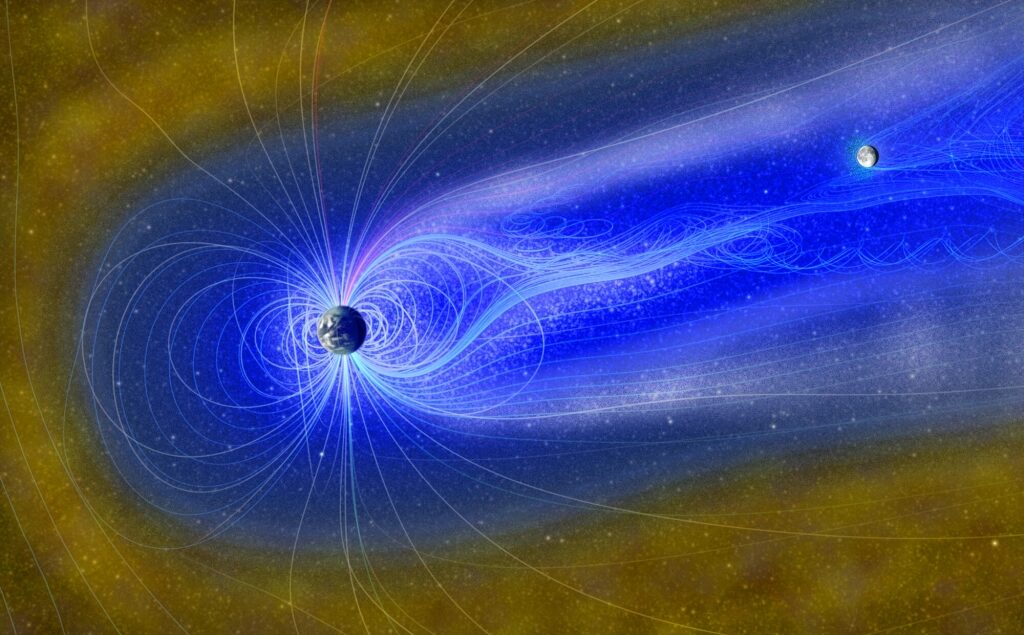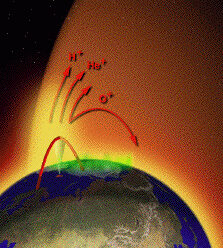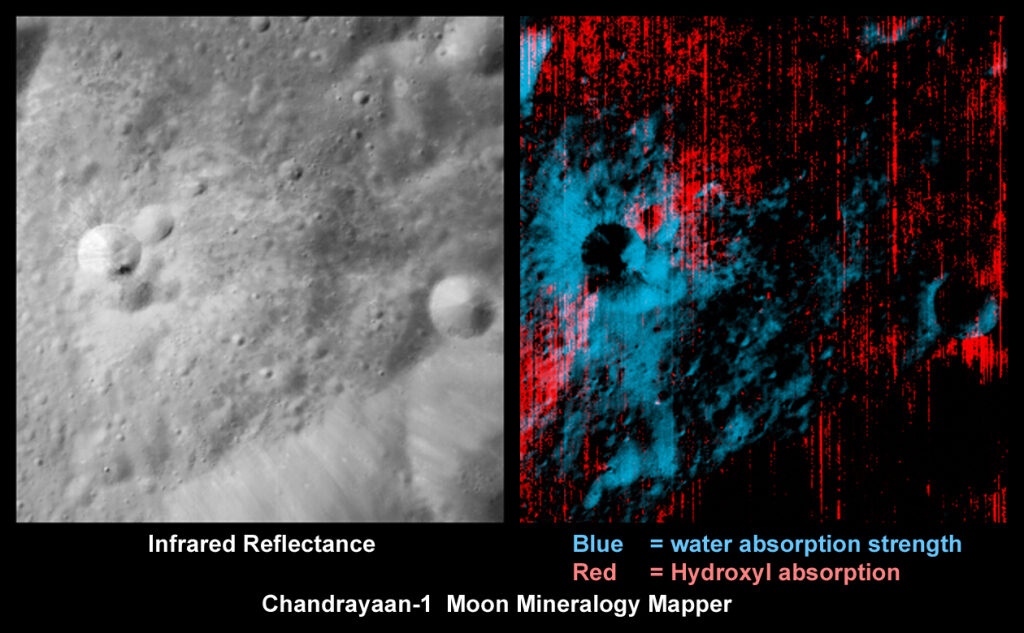Would you believe, Earth is windy, too? Our own planet produces a breeze of electrified gas. It's like the solar wind, only different, and it may have important implications for space weather on the Moon.
"Earth wind" comes from the axes of our planet. Every day, 24/7, fountains of gas shoot into space from the poles. The leakage is tiny compared to Earth's total atmosphere, but it is enough to fill the magnetosphere with a riot of rapidly blowing charged particles. Ingredients include ionized hydrogen, helium, oxygen and nitrogen.
Once a month, the Moon gets hit by a blast of Earth wind. It happens around the time of the full Moon when Earth's magnetic tail points like a shotgun toward the lunar disk. For 3 to 5 days, lunar terrain is bombarded by H+, He+, O+, N2+ and other particles.
One effect of Earth wind, just discovered, is to create water. According to a new study published in the January 2021 edition of the Astrophysical Journal Letters, Earth wind can actually make H2O on the lunar surface.
Comment: Detail here: First evidence that water can be created on the lunar surface by Earth's magnetosphere
"Hydrogen ions in Earth wind combine with oxygen in Moon rocks and soil to make hydroxyl (OH-) and water (H2O)," explains one of the lead authors, Quanqi Shi of Shandong University and the Chinese Academy of Sciences. "This came as a surprise."
Researchers have long known that hydrogen from space raining down on the Moon can create a temporary form of surface water. Solar wind does it all the time. However, this kind of water was expected to dry up once a month when the Moon enters Earth's magnetic tail. Terrestrial magnetism deflects solar wind, turning the faucet to the OFF position.
But that's not what happened.
The researchers looked at data from NASA's Moon Mineralogy Mapper (M3) onboard India's Chandrayaan-1 spacecraft, which was orbiting the Moon in 2009 when the Moon made multiple passes through Earth's magnetic tail. "We found that lunar surface water does not disappear as expected during the magnetosphere shielding period," says Shi. "Earth wind must be bridging the gap."
In fact, when it comes to producing water, Earth wind has some big advantages over solar wind. When the full Moon is inside Earth's magnetic tail, it is surrounded by Earth wind and feels its impact from every direction. The lunar nearside, lunar farside, and lunar poles are all peppered with Earth wind particles. In this sense, Earth wind can potentially make water anywhere-unlike the solar wind which rains down only on the lunar dayside.
Another potential advantage of Earth wind: It is oxygen rich. "Oxygen is another key element of water," points out Shi. "Whether these oxygen ions can contribute to the formation of lunar water is a very intriguing question for future study."
Want to learn more? Read the original research here: "Earth Wind as a Possible Exogenous Source of Lunar Surface Hydration"






I can't work out who is the greater infant - the scientist who writes this garbage of the people who read it and nod their heads sagely... as they pass wind...